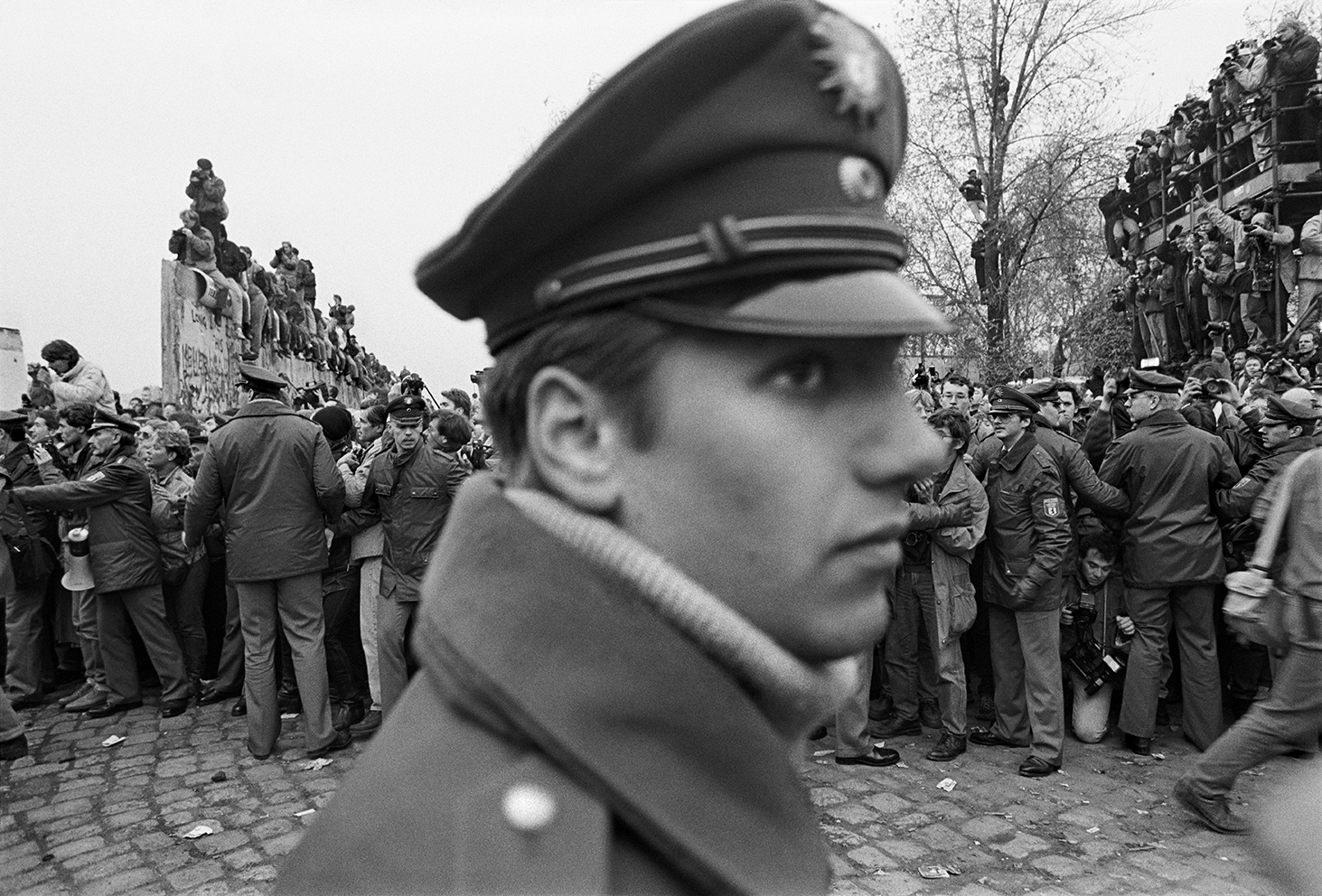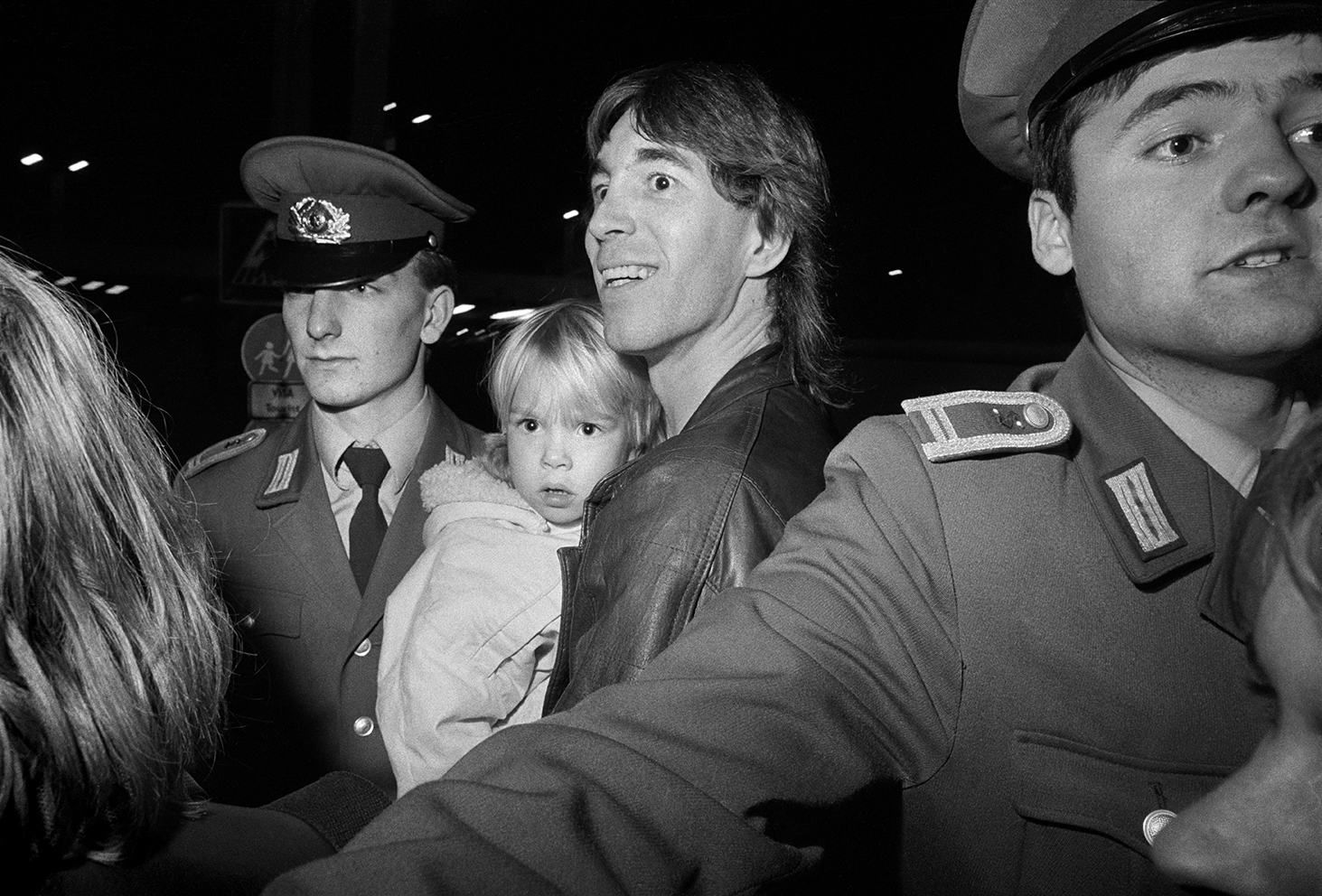
@ Mark Power
Then, some American asshole with Christmas lights on his jacket singing a pop song about years of collective trauma and a hangover of cheap products and Stasi disappearances like he knew something, which was clear, he did not. From his leather jacket to his mullet, Hasselhoff represented the anti-Christ of the west, full of opportunism and the death of guilt built on a suffering he never felt.
By Brad Feuerhelm, ASX, March 2015
The ominous presence of the divisionary wall now stands along Berlin’s circuitous borders like rotted teeth filed down to the nub. There was a time when those teeth were filled, capped, and rained golden yellow showers of hate down upon an already war-torn landscape. The people of a city, conflicted. A tale of two cities in one forlorn and desolate landscape paying a double bill for a war they did not necessarily desire and a dislocation they certainly did not want. It was a problem of a discourse between two other super powers fighting for a global dominance of separate ideologies after a recent troubling past where one former ideology failed and left a nation in ruins. Maybe its too easy to talk about memory, architecture, pride, and nationhood in the context of World War II and its aftermath, but what do we do when our teeth divide us in a mouth that is no longer our own.
Mark Power’s superb “Die Mauer Ist Weg…” is a superlative and transitional study of those days when nothing and everything happened at once. Stoned and drugged with euphoria and uncertainty, Berliners walked across the rotting teeth of a wall that had divided them for 30 years, the haze of warfare and death still hanging awkwardly in the air like some vengeful bird of prey, its appetite set to let loose a new trauma and a new displacement. Unity? Then enters some American asshole with Christmas lights on his jacket singing a pop song about years of collective trauma and a hangover of cheap products, and Stasi disappearances like he knew something, which was clear, he did not. From his leather jacket to his mullet, Hasselhoff represented the anti-Christ of the west, full of opportunism and the death of guilt built on a suffering he never felt.

@ Mark Power
Within the paradigm of photography, nothing is truly set to represent. Just as with memorials and cenotaphs to the dead, we are stricken by a false nostalgia to understand in real time terms what it meant to suffer through a piece of stone.
This rotten set of teeth, a mausoleum, a tomb, and unclear justification of what it meant to suffer hardships on one side of the jaw when the other side had blue jeans, Coca-Cola, and an American burger joint. Within the paradigm of photography, nothing is truly set to represent. Just as with memorials and cenotaphs to the dead, we are stricken by a false nostalgia to understand in real time terms what it meant to suffer through a piece of stone. Granddaddy died on the Somme, and my family was clothed in swaddled uniform rags in a timeless non-progressive existence, while your world, which I could hear on the other side of the dogs and the rat hole escape tunnels on this side of the wall, bred a life of insignificance. Here, a further loss, and an inability to remember what these pieces of material influence have cost us. Likewise, the otherness that the West Berlin side felt awkward as it stood back in anticipation of the “Ossies” coming through the wall. Here, a former family member seen walking in a transcendent, nearly coma-like state into the jaws of the wild Wild West. These East Berliners and their bad clothes, shitty gherkin jars, and otherness came home. A new tribe of people that looked like us, but dressed in alien clothes and spoke in an alienable tongue, waiting to be beaten back by our hands and the hands of our new emperor in his star spangled blue jeans. To be confronted with the monumental possibility of life on the other side of the monument of death.
Mark Power’s book captures this queer nostalgia of this uncertainty, brilliantly. Instead of only focusing on the ebullient and joyful re-assessment programming that was accorded with the traversal of the wall, he has focused also on the mania of ideologies’ former separation blues. He has documented East Berliners confronted with cameras snapping and whirring, flashes popping in their dazed eyes as they reached for magazines on a stand, holding them with one portion fascination and one portion, certain trepidation. It’s a powerful book and on purely technical terms, the production, the product, the producible dream has a achieved effect…that is to say it purports nothing clearly, but understands its epitaph as such. For that, it is a success and a failure, such as the tale of the bifurcated and rotten row of teeth that kept Berlin’s own future separate for decades.
Mark Power
Die Mauer Ist Weg
Self-Published
(All rights reserved. Text @ Brad Feuerhelm. Images @ Mark Power.)
